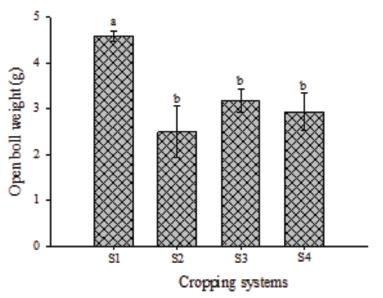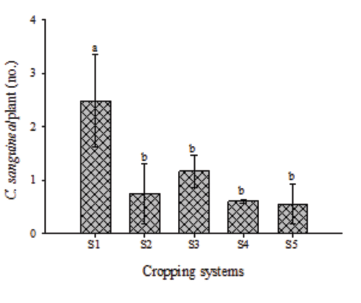ABSTRACT
The intercropping is an important cultural practice commonly used in pest management. It is based on the principle that increased plant diversity in the agro-ecosystem can lead to reductions of pest populations in the crop. The current study aimed to assess the impact the colored fiber cotton-cowpea intercropped systems on Aphis gossypii and Aphis craccivora and on their predator Cycloneda sanguinea and the losses and the dispersion behavior of these aphids and their predator in these cropping systems. The experiment had a randomized block experimental design with two bioassays and four treatments. The number of apterous and alate aphids (A. gossypii) per cotton plant was 1.46 and 1.73 or 1.97 and 2.19 times highest in the solid cotton system than that found in the cotton-cowpea intercropped systems (S1) and (S2), respectively. On the other hand, the cotton-cowpea intercropped systems (S1 and S2) reduced, respectively, in 43% and 31% the number of apterousA. gossypiiper cotton plant compared to the control. Implementing cotton-cowpea intercropped system in the S1 scheme reduced A. gossypii infestation, favored the multiplication of C. sanguinea, and allowed obtaining heavier open bolls.
Key words:
aphids; cowpea; cotton; behavior; intercropping

 Thumbnail
Thumbnail




